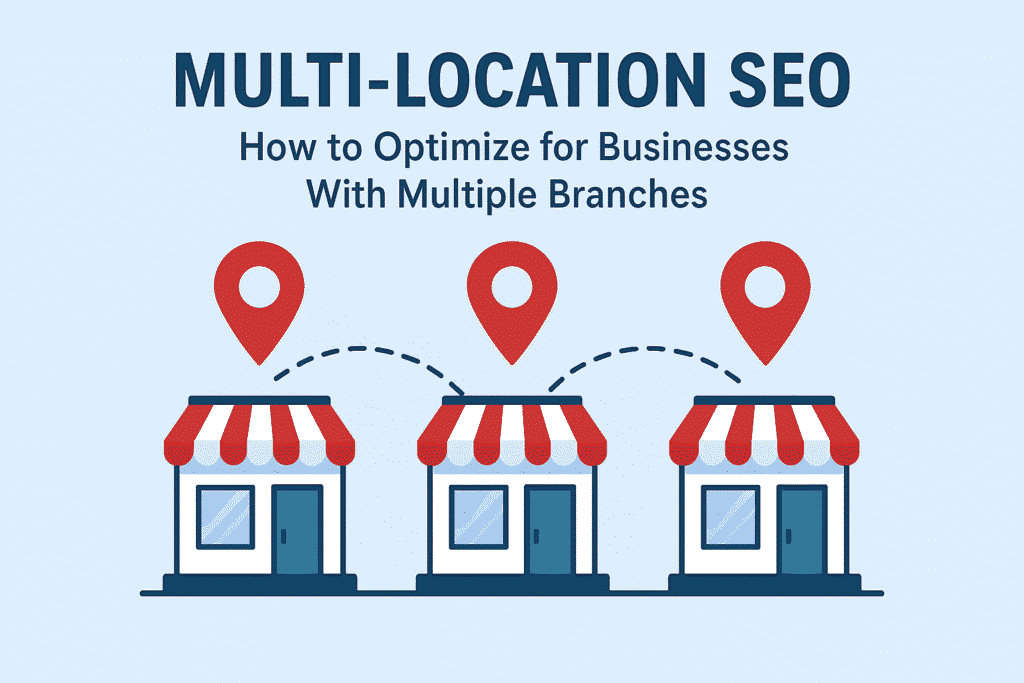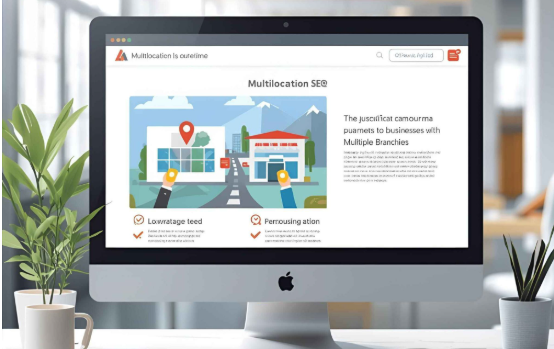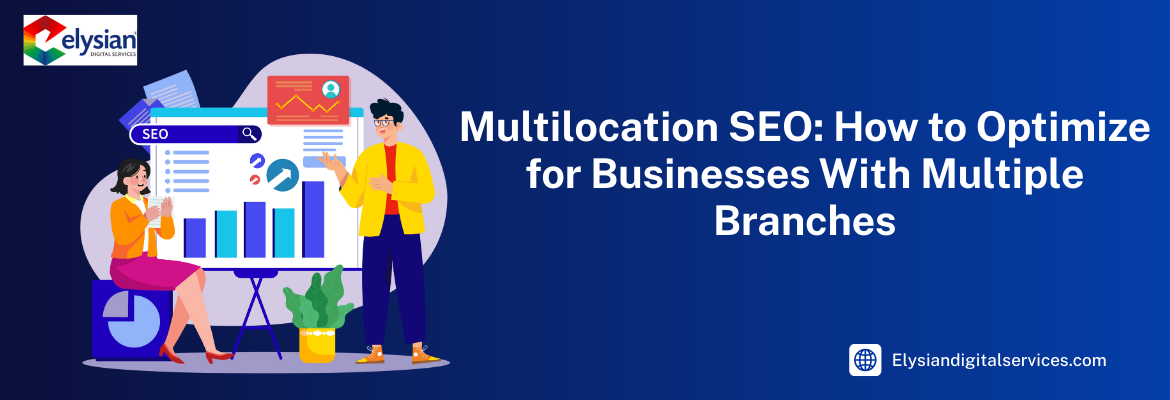Table of Contents
ToggleMultilocation SEO: How to Optimize for Businesses With Multiple Branches

Businesses With Multiple Branches. Managing a business with several branches can feel like spinning plates you’ve got to keep each location visible, relevant, and competitive in its own local market. That’s where Multilocation SEO: How to Optimize for Businesses With Multiple Branches comes in. It’s all about tailoring your online presence so each branch shows up when people nearby are searching for what you offerThe short answer? You need a well-structured strategy that focuses on local SEO for multiple locations from creating dedicated landing pages to optimizing your Google Business Profiles. Done right, this approach can turn each branch into a customer magnet while strengthening your brand as a whole.
Why Multilocation SEO Matters for Local Businesses
Imagine you run a popular coffee shop chain with five locations spread across the city. If someone searches “coffee shop near me” in Brooklyn, but your website only has one generic page, you’re practically invisible to that customer.
Multi location SEO solves this problem by making sure each branch has a strong local footprint. It helps you:
- Rank higher in Google local searches.
- Build trust with location-specific content.
- Compete effectively in different neighborhoods.
Attract both foot traffic and online sales.
| Factor | Single Location SEO | Multi Location SEO |
|---|---|---|
| Target Area | One city or region | Multiple cities/regions |
| Website Structure | One main site page | Multiple location pages |
| Google Business Profile | One listing | Several listings |
| Ranking Difficulty | Moderate | High – needs separate strategies |
Simply put, without multi location local SEO, your business is like a lighthouse with no light no one can find you!
Crafting an SEO Strategy for Multiple Locations
Building an SEO strategy for multiple locations doesn’t have to be overwhelming. Think of it as setting up a game plan where each location has its own playbook. Here’s how to make it happen step by step:
1. Do Smart Keyword Research for Each Location
Your keywords should reflect the way people search in different areas.
- Use tools like Google Keyword Planner, SEMrush, or Ahrefs.
- Include city names and local terms in your keywords.
- Example:
- “Pizza delivery in Chicago”
- “Best gluten-free pizza Brooklyn”
- “Pizza delivery in Chicago”
2. Create Dedicated Location Pages
Each branch deserves its own landing page with unique content.
- Include NAP (Name, Address, Phone Number).
- Add local images, customer reviews, and area-specific offers.
- Keep content authentic no copy-pasting!
3. Optimize Google Business Profiles
Your Google Business Profile (GBP) is like a digital storefront.
- Claim and verify each location.
- Add accurate business hours, photos, and services.
- Encourage customers to leave reviews regularly.
4. Build Local Citations and Directory Listings
Make sure your business details are consistent across platforms like Yelp, TripAdvisor, and local directories.
5. Manage Online Reviews and Reputation
Positive reviews = higher trust and better rankings.
- Respond to every review, even negative ones.
- Encourage happy customers to share their feedback.
How to Do Keyword Research for Multiple Locations
Keyword research for multilocation businesses is a bit like tailoring clothes you can’t use one-size-fits-all. Each branch serves a unique audience, so your keywords should reflect local intent.
Here’s how to nail it:
- Brainstorm location-specific search terms.
- Use Google’s autocomplete feature to discover local trends.
- Check competitors’ websites for inspiration.
- Group keywords by location to keep your strategy organized.
Example:
- Los Angeles: “affordable home cleaning Los Angeles”
- New York: “eco-friendly home cleaning NYC”
This approach keeps your content relevant

Common Multilocation SEO Mistakes to Avoid
Even well-meaning businesses can slip up. Here are common pitfalls to watch out for:
- Duplicate Content: Copying the same text across multiple pages hurts rankings.
- Ignoring Localized Content: Failing to include local landmarks or events makes pages less relatable.
- Poor GBP Management: Outdated hours or incorrect addresses can frustrate customers.
- Inconsistent NAP Information: Mismatched details confuse both Google and your audience.
Measuring Success and Tracking Results
How do you know if your efforts are paying off? Track these key metrics:
- Website Traffic by Location: Use Google Analytics to see which pages are performing.
- Rankings for Local Keywords: Tools like SEMrush can track keyword positions.
- Google Business Profile Insights: Monitor calls, directions, and search views.
Customer Reviews and Ratings: A steady increase signals healthy growth.
FAQs About Multilocation SEO
Q1: Can I use one Google Business Profile for all my locations?
No, each branch needs its own verified profile to rank in local searches.
Q2: How often should I update my location pages?
At least once a quarter, or whenever business hours, services, or promotions change.
Q3:. Do I need separate social media accounts for each location?
Not always. It depends on your audience size and resources.
Q4:How long before I see results from multi location SEO?
Typically, 3–6 months, depending on competition and effort.
Conclusion
Optimizing for multiple locations might seem like juggling flaming swords at first, but with the right approach, it’s entirely doable. By combining smart keyword research, well-structured location pages, and solid reputation management, you’ll turn each branch into a local search powerhouse.
A strong multi location SEO strategy doesn’t just boost rankings it drives real-world results like foot traffic, phone calls, and sales. So, roll up your sleeves, start optimizing, and watch your business grow city by city, branch by branch.
Ready to take your multi-location SEO to the next level? Partner with Elysian Digital Services and let our experts help your business dominate local search and drive measurable growth across every location.
